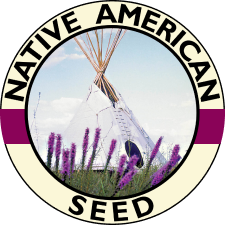Landowners impacted by recent floods will benefit by protecting their land. Reseeding with diverse mixtures of local native species can help jumpstart healing of damaged upland & riparian areas. “Planting Pockets” can be found in and around fallen brush, limbs, branches to give natural protection. Growth and restoration will begin with soaking rains.
The Riparian Recovery Mix by Native American Seed is an “ecosystem in a bag,” comprising a rich blend of 36 native grasses and wildflower species specifically formulated to aid in rebuilding stream bank buffer zones. Designed for restoration along Texas waterways, it features deep-rooted native plants that work in concert with natural debris—like downed logs and limbs—to dissipate floodwater energy, trap sediment, stabilize soils, and support habitat recovery. In short: it's a purpose-built seed mix engineered to re-establish functional, resilient riparian vegetation.
Texas is home to more than 3,700-streams and 15 major rivers.
Totaling 191,000-miles, riparian areas are essential in storing and protecting water quality, preventing erosion, and providing nutrients and habitat for fish, fireflies and wildlife. Our actions (or lack of) can sustain healthy, vibrant natural riparian areas for all to enjoy now and in the future. Often, the best thing you can do for stream banks is leave them alone. Heavy equipment compacts soil, making recovery difficult. Cleared, manicured turf lawns are extremely low stabilizer plant communities offering little soil protection or water filtration. After flooding, leave downed trees and drift in place where practical. Native, deep-rooted, diverse plant communities work together with big dead wood, limbs and debris to help dissipate floodwater energy, filter and trap sediment, and stabilize soil and plant recovery. Regeneration can occur naturally in riparian areas especially where there are existing healthy uplands in place.
Fallen Trees & Debris
Begin healing with nature by using her hard earned gifts. After extreme floods, many downed trees and natural debris may be strewn along streams and banks. Leave much of this material in place for it is nature’s way to begin the healing process. Often silt and topsoil are caught behind debris. In time, big wood lodges in place providing stability and micro nurseries for new plants to sprout and take root. These fallen trees and debris are working to beautify and slow the next flood.
Wildlife Habitat
Wooded & vegetated riparian areas can make good habitat for fireflies, monarch butterflies and other wildlife. Fireflies look for moist logs to lay their eggs on. Eggs soon turn into larvae ‘glow-worms’, then to adult fireflies living only 10-14 days. During daytime hours fireflies need protection in vegetation. According to Firefly Watch & The Vanishing Firefly Project, frequent mowing and artificial night lights may adversely affect fireflies.
Erosion
Any circumstance where bare soil is receiving concentrations of flowing water is likely to erode. Avoid overgrazing. Use of simple processes can enhance your ability to establish natives from seed. Erosion Blankets work for holding seeds on slopes, channels and other erodible areas. The biodegradable wood fiber will breakdown over time in sunlight, leaving you with established native wildflowers and grasses.
Live Roots
Available by the handful, our family farm raises perennial live roots shipped direct to you every Tuesday. We know these plants by their strength and ability to grow. High stability rated plants are useful in streambank stabilization, riparian areas, erosion control, wetlands, raingardens and wildlife habitat restoration: Eastern Gamagrass, Switchgrass, Maximilian Sunflower, Tall Aster, Tall Goldenrod.
Seed Balls
Making Seed-Balls is a fun recovery activity! For individuals, families, groups and children, a seed ball recipe is recommended for those hard to reach areas and steep banks. Six parts sifted clay, one part sifted compost, two parts native seeds, and one part water are mixed into a dough and hand rolled into half-inch balls. Allow to dry and harden. Then, gently toss on the ground; Mother Nature does the rest. Cast with hopes of making a better world.
Quick Links to more Riparian Management Resources:
- Your Remarkable Riparian Book Set
- After the Deluge, Riparian Sponge articles
- Hill Country Alliance - Riparian Management
Plants are not equal in providing stability, native plants make riparian areas function. Stability Ratings (see brown circles on product photos with SR number) according to ability to withstand erosive forces of water.
1 = bare ground
10 = anchored rock
6-7 minimum necessary for adequate bank stability. Stability rating of individual plants is multiplied when in interconnected colonies.
- TALL DROPSEED
- BLACK-EYED SUSAN
- SAND DROPSEED
- CLASPING CONEFLOWER
- GREEN SPRANGLETOP
- PLAINS COREOPSIS
- VIRGINIA WILDRYE
- BIG BLUESTEM
- PRAIRIE WILDRYE
- TALL GOLDENROD
- PLAINS BRISTLEGRASS
- SWITCHGRASS
- PINK EVENING PRIMROSE
- LEMON MINT
- ILLINOIS BUNDLEFLOWER
- SWAMP SUNFLOWER
- SLIM TRIDENS
- INDIANGRASS
- STIFF GOLDENROD
- PARTRIDGE PEA
- SIDEOATS GRAMA
- MAXIMILIAN SUNFLOWER
- CANE BLUESTEM
- INLAND SEAOATS
- SOUTHWESTERN BRISTLEGRASS
- SCARLET SAGE
- BROOMSEDGE BLUESTEM
- SWAMP MILKWEED
- MARSH ELDER
- CARDINAL FLOWER
- EASTERN GAMAGRASS











